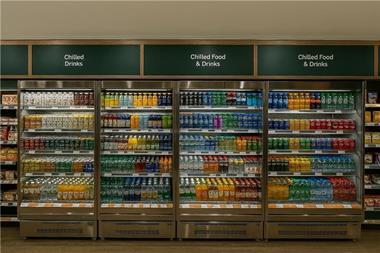How big a problem is parallel trade?
Phil Evans The amount of grey market trading is small overall, but big in a few areas. It seems like a perversion to allow corporations to use a legitimate tool for identifying goods (a trademark) but then restrict trade and charge different prices in different markets.
Steven Jennings A huge range of products, from nappies to soup and razor blades, has at one stage been parallel traded. Entrepreneurs will exploit whatever price differences there are in the world, using any means they can because they say it helps the free flow of goods. But manufacturers are concerned because these people don't see or handle the products and take things on trust. Sometimes the origin of the goods has been misdeclared and this can make a significant difference on paying duty.
Manufacturers are concerned that they're stuck with guaranteeing something when they're not sure of its origins. Matters are taken out of their hands but then they are expected to fulfil everything that that brand symbolises when they have no idea where the product has been during its lifetime. They get very jittery about it. I'm sure Tesco wouldn't be happy to give a refund on shoplifted goods.
Simon Sophe We've been unable to buy some clothing from the standard outlets, knowing customers wanted it. Non-food is something we're keen to develop and we want to offer a variety of brands. Levi won't supply us so we buy their jeans elsewhere in Europe and, because this isn't enough, we're trying to source them outside Europe, but Levi is trying to stop us.
It's not only the multiples that are affected. I know of quite a few surf shop owners in Newquay who have had problems because people such as Billabong were only allowing them to buy from official channels. They told us that a win for Tesco would really help them.
Simon Musta The grey market is important to us because we can't source direct from the brands and non-food is increasingly demanded by customers, so we're actively continuing to source around Europe.
How important is price in the equation?
Steven Jennings There's too much emphasis on attacking brand manufacturers. They're not responsible for the final cost. Retailers have different prices look at the Grocer 33 Safeway charges less for corn flakes in some places.
Huge amounts of everyday goods are parallel traded you don't see the difference on prices in those. Any additional profit is taken out by the time it ends up with the consumer. Manufacturers are being blamed for store prices, but they don't control them.
It's a different picture in the US where there is seven times more retail space per person than in the UK so, with that amount of competition, there's bound to be a difference in prices. There's also a different tax structure.
Simon Musta There are many examples of opportunities to get better prices. The majority of the grey market is creating new markets, because you can't get supplies.I don't understand the brands' argument that, by restricting supply, they can protect the brand. Coca-Cola is in such mass supply that the argument goes out the window.
If we could, we'd buy from legitimate sources, establish good relationships with the brand and the consumers would get the best deal buying it in many more outlets than they can now.
Simon Sophe If we could get the products, we'd provide cheaper prices all the time. We found Red Bull 15p cheaper in Spain so we went to Red Bull and it reduced its prices.
It's not bullying, if it had decided that it didn't want to play ball we could have sent trucks down to Spain. Exchange rate differences account for different prices in different countries and if fresh food is produced locally it is cheaper. However, exchange rates don't account for the differences in non-food that we've been able to source through the grey market.
How are the brands concerned perceived in the industry?
Simon Musta It's a shame the brands take the attitude they do. If they formed relationships with different retailers it would enhance their position.
Steven Jennings There's a lot of brand envy. I want to sell Sony PlayStations, but I'm not allowed to', so you see someone wishing to cash in on the reputation which the brand has because they know the product will sell.
Brand owners see their relationship with trade partners like joining a golf club you pay your fees and get access to all the facilities or you can go on the public course and not get the added benefits.
A retailer has 20,000 different products on which to make a living, brand manufacturers have maybe one or 20, so their reputation is that much more important.
Surely if a manufacturer wants to restrict its products in a certain way and its brands are no good, it will wither and die.
Eddy Powell Take the example of the brand owner who has decided to adopt a global brand and calls it the same thing everywhere in the world. It could call it different things in different countries. If the manufacturer wants to have an international global strategy it should take the downside that stuff moves around the world.
Phil Evans The reaction to parallel trade is almost a parallel overreaction. Manufacturers are already sullying their own brand, for example by selling perfume on cross-channel ferries. The brands have undermined their position for so long that no one has any sympathy. It should be up to consumers to make the choice about where they buy something.
The argument about not wanting open trade is dangerous because it says we shouldn't trade with anyone apart from countries in the Organisation for Economic Co-operation and Development and it denies the brands the ability to make a profit abroad.
Why is it wrong to put a brand up against itself cross market? The whole global market is based on certain countries having cost advantages. If you have selective distribution and a ban on parallel trade, you are saying, you come to us or no one or you get sued'.
Simon Sophe It doesn't matter to us that we don't have a relationship with Levi. It's a small world. We can go wherever we want to go in Europe and buy these products.
Is there a danger that parallel trade increases the risk of sub-standard and counterfeit products on the market?
Steven Jennings Once a product starts to turn up outside your normal supply chain you don't know how long it's been there. Shipments of batteries come in on parallel trade with just a couple of months of a five year life span left. That does no service to the consumer.
Manufacturers make products to comply with particular country requirements and one of the concerns is over allergic reactions. Manufacturers go to great lengths to make sure the labelling complies. When the product comes back in, it won't have the required labelling and could have been made to a different formula. It's about taking the product out of context.
Simon Musta We have a number of legal companies that work with us checking to make sure goods are legitimate. This process holds things up and often we have to let parcels go because we can't verify them in time. That frustrates demand. Brands are doing themselves a disservice because they're opening up the opportunity for the entrepreneurs and less honourable people, who we're trying to stop.
Eddy Powell The brand owners certainly don't help the process. If we have suspicions and send samples to a brand and ask them if it's genuine they don't answer, or automatically say it's counterfeit, and ask us, please tell us where you got it'. We see it as an attempt to shut down the sourcing of the goods.
Simon Sophe It's essential that every product comes through relevant checks, to make sure they all are genuine, whether they are grey or not. It's a more difficult process to grey trade than to deal with someone like Kellogg's all the time.
Because of all the secrecy, some manufacturers are scared. On the one hand, they seem to be passing a lot of product to us, but sometimes they turn a blind eye to grey trading. For example at the end of a football season, suddenly you find a huge amount of the old football strip available on the grey market.
Do consumers understand the issues?
Judith Gubbay No one knows whether the price they're paying is normal until they see something different, particularly when they travel and see the same product in the US at the same dollar price as pound price.
This can't all be about the exchange rate and extra costs. Consumers want to know the answers.
There's a lot of confusion for them and, although retailers are saying they're helping consumers by buying on the grey market, they can't guarantee supply, and in some ways that's even worse than how things are now. In other words, you can only get cheap jeans this week. That is not a satisfactory situation.
Marion Lyons The consumers are never going to understand why they see something here at £20 more than in the US or why they see the same jeans in different shops at different prices. They don't think about tax implications. They still think they're in Rip Off Britain.
Some people like to pick up Levi's at Tesco because the price is fantastic, while others want to go to Levi's because of the range. Consumers view things differently, but they want the choice.
They also have access to the internet and can see that products are cheaper in other market places and they don't understand why. Manufacturers are not being forward thinking in denying retailers.
Phil Evans The Consumers' Association asked people where they wanted to shop and those who were the most brand-centric were the least likely to go to the specialist brand operative. They wanted it very cheaply.
We've become a lot more American in our shopping habits. We have become less brand loyal and, at the same time, we want stuff as cheaply as possible.
Simon Musta Most people come into our stores to buy food. Non-food is pure impulse. People buy brands from us because they have a perceived price, and they may not have bought those brands previously.
What would be the outcome if the law on parallel trading was relaxed?
Simon Musta Controlling the amount of distribution would hold up prices through supply and demand. If you allow a much wider distribution, as the Americans do, prices would come down.
Eddy Powell Even within European trade there's a get-out. If the brand owner can establish legitimate reasons to object to the goods being parallel imported, he can take action. There's no reason why that couldn't be applied to the wider context. If a brand owner says a product can't go on sale in the UK, the courts should be able to uphold that.
Phil Evans Perfume can be bought in Superdrug and in Sainsbury, as well as in department stores, yet the market hasn't lost its caché despite this trading on the grey market. Consumers have a choice of buying in these places, or from the internet, with different service levels and pricing, yet the market has not been eroded.
There are certain brands which are good at restricting the flow of their goods but the brands that fight hardest have undermined themselves for years by selling to department discounters and their own outlets. They've already accepted that consumers want to shop in different ways, although they don't want anyone else to do it.
At the moment, brands are saying that British prices need to be higher so they can make more of a margin. So the consumers are effectively paying an innovation tax to help these firms innovate. n
{{COVER FEATURE }}
Close menu
- Home
- Retail & Wholesale
-
Products & Suppliers
- Back to parent navigation item
- Products & Suppliers
-
Product Categories:
- Back to parent navigation item
- Product Categories:
- Alcoholic drinks
- Bakery
- Cereals & breakfast
- Cheese
- Chicken & poultry
- Chocolate
- Confectionery
- Crisps, nuts & snacks
- Dairy
- Fish
- Fresh produce
- Frozen
- Household
- Meat
- Own Label
- Sauces & condiments
- Seasonal
- Soft drinks
- Vaping
- Vegan & plant-based
- World foods
- Suppliers
- People
- Reports & Data
-
Topics A-Z
- Back to parent navigation item
- Topics A-Z
-
Popular topics:
- Back to parent navigation item
- Popular topics:
- Cost of living crisis
- Crime
- Deposit Return Schemes
- Finance
- Government & Regulation
- Health
- Inflation
- Loyalty
- Marketing
- Mergers & Acquisitions
- New Product Development
- Sourcing
- Supply chain
- Sustainability & environment
- Technology
- Ultra Processed Foods
- Vaping
- A-Z all topics
- Content by type:
- Events
- Ask iA (beta)
- Subscribe now
Sign in to comment on this article
Not logged in before? Register for FREE guest access today.
You will be able to:
- Read more stories
- Receive daily newsletters
- Comment on stories
Advert



















No comments yet